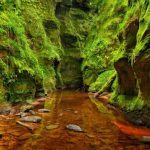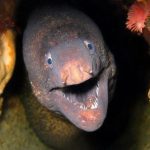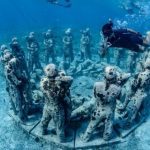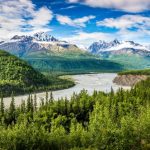 Creepy
Creepy  Creepy
Creepy  Technology
Technology 10 Scientific Breakthroughs of 2025 That’ll Change Everything
 Our World
Our World 10 Ways Icelandic Culture Makes Other Countries Look Boring
 Misconceptions
Misconceptions 10 Common Misconceptions About the Victorian Era
 Mysteries
Mysteries 10 Strange Unexplained Mysteries of 2025
 Miscellaneous
Miscellaneous 10 of History’s Most Bell-Ringing Finishing Moves
 History
History 10 Great Escapes That Ended Right Back in Captivity
 Weird Stuff
Weird Stuff 10 Fascinating Things You Might Not Know About Spiders
 Food
Food 10 Everyday Foods You Didn’t Know Were Invented by the U.S. Military
 History
History 10 Odd Things Colonial Americans Kept at Home
 Creepy
Creepy 10 More Representations of Death from Myth, Legend, and Folktale
 Technology
Technology 10 Scientific Breakthroughs of 2025 That’ll Change Everything
 Our World
Our World 10 Ways Icelandic Culture Makes Other Countries Look Boring
Who's Behind Listverse?

Jamie Frater
Head Editor
Jamie founded Listverse due to an insatiable desire to share fascinating, obscure, and bizarre facts. He has been a guest speaker on numerous national radio and television stations and is a five time published author.
More About Us Misconceptions
Misconceptions 10 Common Misconceptions About the Victorian Era
 Mysteries
Mysteries 10 Strange Unexplained Mysteries of 2025
 Miscellaneous
Miscellaneous 10 of History’s Most Bell-Ringing Finishing Moves
 History
History 10 Great Escapes That Ended Right Back in Captivity
 Weird Stuff
Weird Stuff 10 Fascinating Things You Might Not Know About Spiders
 Food
Food 10 Everyday Foods You Didn’t Know Were Invented by the U.S. Military
 History
History 10 Odd Things Colonial Americans Kept at Home
10 Mysterious Beach Objects
The sea is a fascinating, largely unknown realm full of both potential perils and astounding mysteries. From time to time, the ocean reminds us of its secrets and its possible dangers as incoming tides and surf deliver to our beaches and shorelines strange objects or bizarre specimens of marine life for us to examine. Many of these gifts are indescribable, but we do the best we can, referring to them as “alien,” as “blobs,” or as “monsters.”
The ten mysterious beach objects on this list are examples, each of which, including those that were eventually identified, tested the limits of our knowledge about both the sea and ourselves.
Related: 10 Sunny Beaches with Dark Secret Histories
10 “Alien”
Vicki Evans, who discovered the mysterious object on a beach along Horseshoe Bay in South Australia, must have been as astounded as the people who saw her October 2024 post of its photograph on Facebook. “I’ve never seen anything like this before!” she wrote.
The “freaky flotsam,” as New York Post reporter Ben Cost describes it, is a long, cylindrical mass of gelatinous tendrils. Attached shells of light blue, black, and white make its appearance even odder, suggesting, to some, that it might have been of an extraterrestrial origin.
As it turns out, the “alien” is a community of goose barnacles, crustaceans that attach themselves to floating objects, wharves, and piers or occasionally wash ashore. Dr. Zoe Doubleday, a marine ecologist at the University of South Australia, found the sheer size of the mass surprising. She suspected that it had broken off an old pylon, jetty, or a piece of marine infrastructure. She said that the specimen had to have been in the water for a long time to collect such “a dense cluster of barnacles.”
Although collecting them tends to be messy, Evans might have earned a pretty penny had she done so. They’re considered a delicacy, and diners pay a high price for them: In 2020, a cluster of them was found to have an estimated value of about $65,000.[1]
9 “Black Balls”
One of the more disgusting objects to have been found on a beach were “black balls.” At first, no one knew what they were. They were so strange that their arrival, in September 2024, on several stretches of shore along the coast of Sydney, Australia, caused officials to close the beaches. They consisted of tar. At least, that was an initial assumption. It was the unpleasant task of chemistry professor Jon Beves of the University of South Wales to determine what, in fact, the strange objects were composed of.
As journalist Holly Tregenza reports, Beves found that they were made up of a number of substances: cooking oils, diesel or fuel, THC, methamphetamine, and other “recreational drugs” and, most disgustingly, human feces. The black balls, she reveals, were similar to “fatbergs” that are commonly found in sewage systems. From which waste-disposal system they came, a local one or that of a boat, remained unknown, Beves said, but, he added, he could confirm that “they do smell.”[2]
8 Yellow “Clumps”
Smithsonian Magazine’s correspondent Brigit Katz’s description is an inviting one: “France’s Opal Coast is studded with pristine, sandy beaches that overlook the deep blue waters of the English Channel.” The shoreline’s appearance changed drastically, though, when, in 2017, yellow, spongy clumps washed ashore in droves. They were “weird, fluffy balls,” she says, numbering in the hundreds of thousands.
Initially, no one knew what to make of the strange objects, but an analysis of them by the Cedre Association revealed that they were paraffin wax—a “derivative of petroleum, coal or oil shale.” It was thought that a ship passing through the English Channel may have been the source of the spongy blobs that invaded France’s shore.
According to Jonathan Hénicart, the non-government organization Sea-Mer Association president, ships may dump a certain amount of paraffin wax into the water if the vessels are distant from the shore, but he believes, judging by the huge quantity of the flotsam, that the fleecy yellow tufts were jettisoned near the shore.[3]
7 Eighty-Foot-Long “Mystery Object”
Although, at a distance, the strange object on Florida’s Daytona Beach Shores looks somewhat like a half-submerged snake winding across the beach, nobody knows what it is. However, four possibilities have been advanced. (1) The object’s wood and metal suggested that it could be part of a shipwreck. (2) It was the remnants of a pier destroyed years earlier by a hurricane. (3) Another guess was that it was part of spectators’ seating left over from NASCAR racing, some of which events took place on beaches during the 1950s. (4) Last was the option of a groyne—a wooden, stone, or metal structure designed to prevent beach erosion by limiting flows of water and sediment.
Archaeologists decided that the first possibility was probably correct: the object, which was beached in 2022, was apt to be a remnant of a shipwreck that occurred during the nineteenth century. As the scientists uncovered the object, they found pieces of the ship’s frame, including ribs and ceiling planks. Rather than uncovering the rest of the ship’s remaining wreckage, maritime archaeologist Chuck Meide said they would “let Mother Nature bury” it since such an approach would “help preserve it” in place.[4]
6 “Metal Sphere”
Another mystery object, described as a “metal sphere,” washed ashore on a beach in Hamamatsu, Japan, in 2023. Police and a bomb squad had no idea what the orb was, but they did determine that the “Godzilla egg,” as it came to be called, was hollow and posed no threat. Some locals believed that it might be a buoy or an extraterrestrial object.
Concern over the object was heightened, BBC’s foreign correspondent Shaimaa Khalil notes, because the mysterious sphere was found not long after the U.S. shot down a suspected weather balloon. Japan had already separately expressed concern to China “about suspected [Chinese] surveillance balloons” seen over Japan at least three times since 2019.[5]
5 “Hairy Blob”
Bizarre marine creatures seem to be attracted to the beaches of the Philippines. Toward the end of February 2017, a 20.5-foot-long (6.3-meter-long) “hairy-looking” carcass floated ashore in Cagdianao, a city in the Dinagat Islands, prompting people to wonder whether the dead body might be that of an undiscovered species. A video shows the huge, bloody carcass drifting along as it bloodies the water.
As a Facebook user earlier speculated, the mass does, indeed, appear to be the carcass of a whale, a sperm whale, to be exact. The apparent “hair” was its “decomposed muscle fibers.” However, only a DNA scan or an examination of its skull can tell for certain.[6]
4 “Murrywai Monster”
It was huge. And shaggy. And bedecked with barnacles. It looked monstrous, too, as its nickname, the “Murrywai Monster,” suggested. Named for the Aukland, New Zealand, beach on which it washed ashore, the Murrywai Monster was discovered by local resident Melissa Doubleday. Thinking that her find might be the carcass of a whale, she posted photographs of it on Facebook, hoping to “crowdsource some ideas [as to] what it might be,” writes reporter Nick Whigham.
Her posts prompted results, many in jest; it appears among them were a “sea monster with dreadlocks,” a “beach Christmas tree,” and an “alien pod time capsule.” The fact is that the object was driftwood festooned with gooseneck barnacles. This has been only one of several other seemingly bizarre objects to float onto New Zealand beaches, which, like Australian shores, seem to be magnets for strange ocean flotsam and jetsam.[7]
3 Dough? Fungus? Mold? Wax?
The identity of the “blobs” that the ocean deposited on the Placentia Bay part of Canada’s Newfoundland coast in late 2024 was a mystery that launched an investigation by Canadian authorities, while citizens suggested that the white masses might be dough, a fungus, mold, or wax. Although such speculations sometimes prove true, this time, the answer turned out to remain a mystery.
A series of tests by Memorial University chemistry professor Chris Kozak and his graduate students led to the conclusion that the gobs were made of some type of synthetic rubber and were safe to handle despite their “volatile odor.” The group’s tests also determined that the blobs were probably made of “a butyl rubber PVA [polyvinyl alcohol] composite commonly found in adhesives [such as] glue and nail polish coatings.” Environment Canada disagreed with the professor’s findings, though, concerning the origins of the substance, but stated that it was also not in a position to validate or substantiate the theories or findings of others.[8]
2 Hunk of Junk
The descriptive phrase that springs to mind upon seeing pictures of the mysterious object that the ocean left on South Carolina’s Seabrook Island in 2018 is “hunk of junk.” It’s cylindrical and weighs about 198 pounds (90 kg). A bit mangled, it’s somewhat conical in shape, with a round center, and it appears to be made of thick concrete or stone.
Lowcountry Marine Mammal Network’s executive director, Lauren Rust, who was one of the first on the scene, claimed that there was no metal on it and was presumably] made of concrete that felt “like a soft foam.” It also didn’t appear to have been in the water for long since it was devoid of “barnacles and [other forms of] sea life.”
Officials removed the object for further investigation, but Seabrook Island town administrator Joe Cronin didn’t sound too hopeful that the mystery would be solved. “Unless someone claims it as theirs, we probably won’t have certainty one way or the other,” he declared. It seems that Cronin’s doubts were justified; to date, no other mention of the object or its identification has appeared as far as can be determined.[9]
1 Living Disks
Queensland Museum’s information officer, Dr. Jonathan Cramb, brings readers up to date concerning the museum’s solution to a once-baffling mystery, the discovery of disk-shaped objects composed of calcium carbonate. A large number of them were found on tropical Queensland, Australia, beaches, including Airlie Beach on the Whitsunday Coast.
Oddly, the disks have holes through their centers, are covered in tiny holes, and have numerous internal chambers. They look somewhat like shells, but shells are not perfectly round and don’t have holes through their centers. Even more bizarre is the fact that the disks were once living organisms known as Marginopora foraminifera, most of which are marine. However, some live in freshwater or moist soils.
The disks are thickest on the rim and thinnest at the center because they are tossed about by the surf, which causes their centers to wear through. Most are microscopic in size, although, as Cramb explains, some grow as large as 8.75 inches (20 cm) in size, aided by symbiotic, photosynthetic “single-celled algae,” from which they take not only food but also their yellowish-brownish green color.[10]








